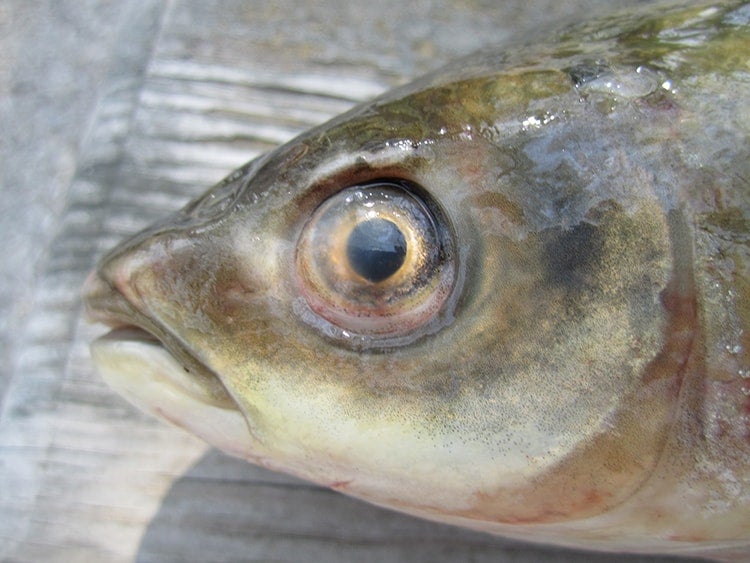Asian grass carp pose ecological threat to Great Lakes: U of T scientist part of Canadian-American research team

Published: January 27, 2017
Asian grass carp pose a significant ecological threat to the Great Lakes and that threat could be extreme over the next 50 years.
This is the major finding of a large binational risk assessment authored by a team of American and Canadian researchers, including Nick Mandrak, associate professor of biological sciences at U of T Scarborough.
“We don’t want grass carp in the Great Lakes, and we need to act now in order to eradicate the population in the Sandusky River,” says Mandrak, referring to the grass carp population already spawning in the Sandusky River in Ohio, which is connected to Lake Erie.
The peer-reviewed study, led by Fisheries and Oceans Canada and coordinated by the Great Lakes Fishery Commission, has researchers from Fisheries and Oceans Canada, U of T, the U.S. Geological Survey and the U.S. Fish and Wildlife Service.
Mandrak himself has conducted risk assessments on silver and big head carp in the past and also authored the first Canadian risk assessment of Asian carp in 2004 when he worked at Fisheries and Oceans Canada.
He says while not all invasive species have a high ecological impact, grass carp are different. For one, they’re voracious eaters, capable of consuming 40 per cent of their body weight per day. As a result, they can grow quite large, up to 30 cm long in their first year of life, meaning they have no natural predators in the Great Lakes. They also produce a lot of eggs, which means even in the short period of time when they can be eaten by larger fish, there are often too many to make a dent in their numbers.
And if you think a cold Canadian climate will deter them, think again. Mandrak has done field research on grass carp living in Siberian lakes covered by more than a metre of ice.

A joint American and Canadian report co-authored by U of T Scarborough Associate Professor Nick Mandrak finds that grass carp pose a significant threat to the Great Lakes. (Photo courtesy of the Asian Carp Regional Coordinating Committee)
Grass carp were first introduced to North America from Asia as bio-control agents in the 1960s. They were brought in specifically to control aquatic vegetation like weeds growing in aquaculture ponds mostly used by the channel catfish industry.
“Unfortunately, they escaped from those controlled environments into the wild either by floods or through being released on purpose,” says Mandrak.
Since then, they’ve migrated up the Mississippi River into the Great Lakes region where they are reproducing in the Sandusky River. Grass carp have already been found in Lakes Michigan, Erie and Ontario.
The concern is that since fish don’t obey borders, there’s nothing preventing them from entering Canadian waters. Once there, Mandrak says grass carps could severely decimate wetlands, which are important spawning habitats for native fish.
“We need to be concerned because we share the Great Lakes, and the economic impacts would be significant especially when you look at commercial fishing and tourism,” he says.
Mandrak points to one aquatic system in South Africa where 13 of the 14 aquatic species of vegetation were destroyed within two years of grass carp being introduced.
He adds we’re at the point early in the invasion curve where grass carp populations can be eradicated if rapid response is taken. If not, we could end up with scenarios from the past like sea lampreys and zebra mussels, two species that upended the ecology of the Great Lakes.
“This study organizes a lot of the information we know about grass carp and the risk they pose to the Great Lakes,” Mandrak says. “Now we need to figure out what next steps can be taken to manage the problem.”



